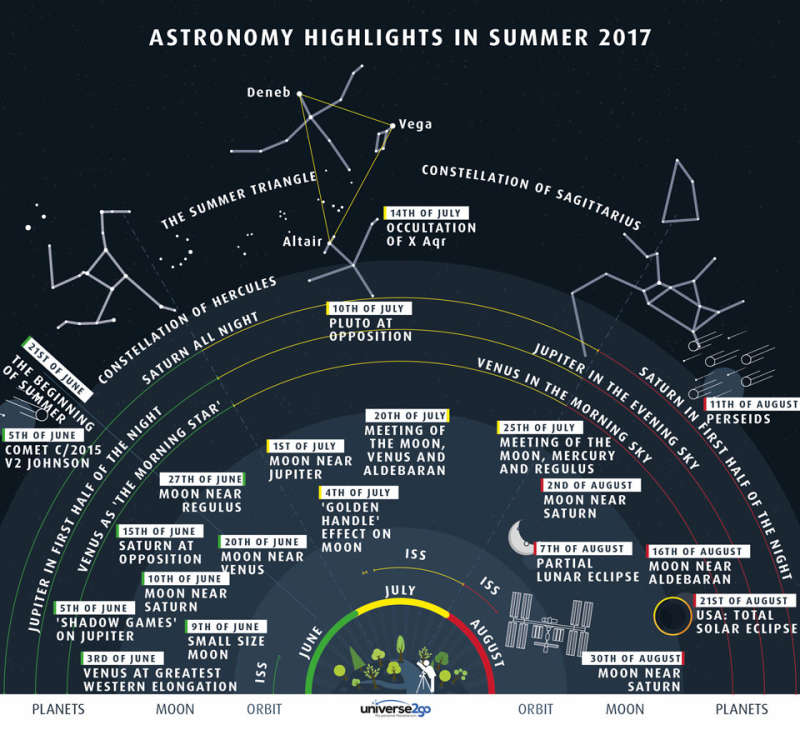Credit & Copyright: Universe2go.com
Explanation:
What's
up
in the sky this summer?
The featured graphic gives a few highlights for Earth's northern hemisphere.
Viewed as a clock face centered at the bottom, early summer sky events fan out toward
the left, while late summer events are projected toward the right.
Objects relatively close to
Earth
are illustrated, in general, as nearer to the cartoon figure with the telescope at
the bottom center -- although almost everything pictured can be
seen
without a telescope.
Highlights of this summer's sky include that
Jupiter will be visible after sunset during June,
while
Saturn
will be visible after sunset during August.
A close grouping of the
Moon, Venus and the bright star
Aldebaran
will occur during mid-July.
In early August, the
Perseids meteor shower peaks.
Surely the most
famous pending astronomical event
occurring this summer, though, will be a
total eclipse of the Sun
visible over a thin
cloud-free swath across the USA on 21 August.
Follow APOD on:
Facebook,
Google Plus,
Instagram, or
Twitter
1999 2000 2001 2002 2003 2004 2005 2006 2007 2008 2009 2010 2011 2012 2013 2014 2015 2016 2017 2018 2019 2020 2021 2022 2023 2024 2025 |
Январь Февраль Март Апрель Май Июнь Июль Август Сентябрь Октябрь Ноябрь Декабрь |
NASA Web Site Statements, Warnings, and Disclaimers
NASA Official: Jay Norris. Specific rights apply.
A service of: LHEA at NASA / GSFC
& Michigan Tech. U.
|
Публикации с ключевыми словами:
night sky - ночное небо
Публикации со словами: night sky - ночное небо | |
См. также:
Все публикации на ту же тему >> | |
